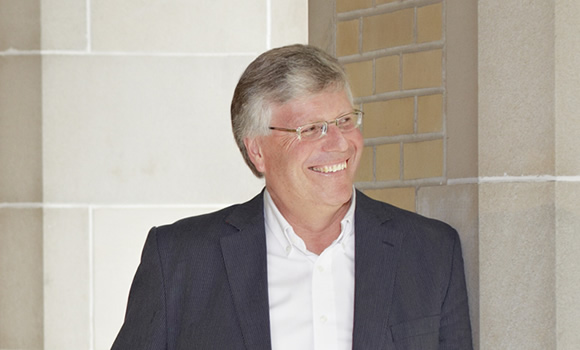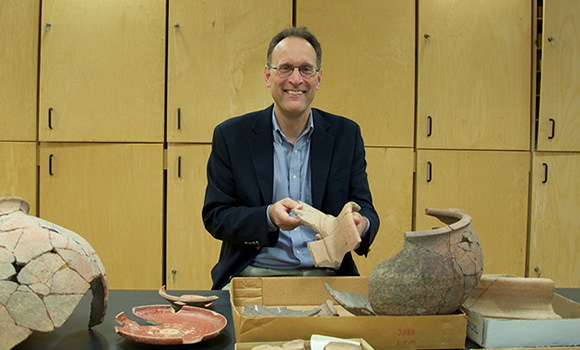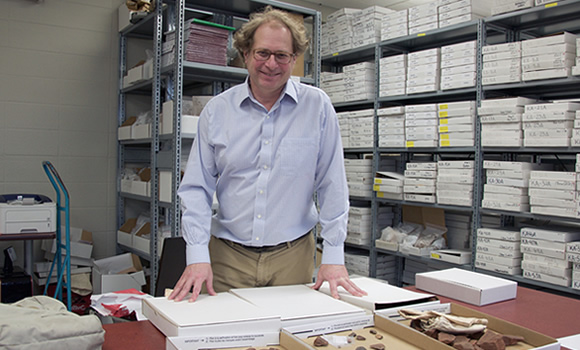More and more of our researchers are using modern digital technologies to better understand the past. Interactive websites bring ancient civilizations to life, while online museums enable us to view collections of historical artifacts and discover customs from anywhere in the world.
Here’s what the heads of our History and Near & Middle Eastern Civilizations departments and the Archaeology Centre see coming soon.

Nick Terpstra
Chair, Department of History
No longer only a “book discipline”— history is increasingly digital
History has long been a so-called ‘book discipline,’ with faculty members pursuing individual research projects that they share with the wider world through books and articles.
But today, faculty on the St. George campus, at U of T Mississauga (UTM) and U of T Scarborough (UTSC) are increasingly expanding the range of their research production and communication through the use of media and digital projects that involve working with colleagues across campus and internationally.
In their broad collaborations, our historians continually review and reinterpret the past. They challenge settled myths or assumptions, particularly around familiar events, movements, or periods.
The Great Lakes Research Alliance for the Study of Aboriginal Arts and Culture (GRASAC ) project, led by Associate Professor Heidi Bohaker on the St. George campus, along with Professor Ruth B. Philips of Carleton University and other North American partners, is one example. The GRASAC project works with Aboriginal community knowledge, memory and perspectives in order to reunite — in digital form — Great Lakes material culture currently scattered across museums and archives in North America and Europe.
Other digital projects include:
- Associate Professor Elspeth Brown (UTM) is developing the LGBTQ Oral History Digital Collaboratorywith SSHRC funding.
- Professor Michael Gervers (UTSC) has won major grants from British foundations to develop three projects aimed at digitizing manuscripts and photographing churches in Ethiopia, many of which are very remote, and making the material available online to scholars and students around the world.
- Associate Professor Natalie Rothman (UTSC) is the principal investigation behind Serai: Premodern Encounters, an open online collaboratory focused on the cultural, religious, linguistic, and political flux marking historical interactions within and across early modern Christian and Islamic societies.
- Associate Professor Jayeeta Sharma (UTSC) is the founder of the Digital Platform and International Collaborative Research Project Mountain Stories and Digital Futures, part of Eastern Himalaya Research Network.
- Professor Nicholas Terpstra has launched a digital mapping project entitled DECIMA that uses a GIS-based digital mapping of all the households in mid-16th century Florence to construct a sensory map of the Renaissance city.
Working creatively across disciplinary boundaries
These collaborations expand into program initiatives that help students and faculty work more creatively across disciplinary boundaries. Culinaria is turning UTSC into a global centre for the interdisciplinary study of food culture and history, and graduate programs in law and history and in contemporary international history will outfit students with critical tools and experience for a broad range of professional careers.
In the coming year, we will be re-examining the 1867 confederation of Canada in a series of courses, public lecture, exhibitions, and a conference on “The Other Sixties” that integrates aboriginal, global, and material culture. A conference on “Global Reformations” will take the anniversary of Martin Luther’s 1517 attack on indulgences to ask broader questions about the many ways in which religious reform movements shaped relations among Christians, Jews, Muslims, Hindus, Buddhists, and aboriginal groups in Europe and beyond.

Tim Harrison
Chair, Near & Middle Eastern Civilizations
We’ll be looking for greater use of research methods in computational science, such as machine-learning analysis, furthering our work in digital humanities. Our Computational Research on the Ancient Near East(CRANE) project is leading the way in this area. Researchers have amassed significant amounts of heterogeneous data — gleaned from such varied sources as pieces of broken pottery, soil samples, photos and illustrations, journal entries — that are interrelated but not easily connected. Our humanities-based research will make significant contributions to the development of digital analytical tools to analyze across different kinds of data, in order to better understand how ancient societies formed and developed across the region.
Cultural heritage: preserving the glue that holds a society together
Another area in which we’ll see a greater focus is cultural heritage research, particularly in the Middle East. Cultural heritage is the glue that holds a society together, and the rampant destruction of artifacts that is happening in the region has become a crisis. It’s caused an explosion of opportunities to do work in this area. There is now a global effort to document the heritage of the Middle East that is breeding significant innovation in software analysis and data capture. It’s a very active frontier at the moment with a lot of people developing tools for this, so there is some duplication in such a research-competitive environment. But it’s leading to the development of some very powerful analytical software. The CRANE project has evolved to include this in its scope.

Michael Chazan
Director, Archaeology Centre
The coming years will see increasing interaction between genetics and archaeology. Assistant Professor Bence Viola in the Department of Anthropology is part of the team working on the Denisovans, a human ancestor that we only know about from the DNA sequencing of fossils from Russia.
We will continue to face threats to the archaeological record from global climate change. Professor Max Friesen is leading a project to understand the impact of sea-level change on archaeological sites in the Arctic.
21st-century approach
Methods from computer science including big data mining and 3-D visualization will continue to transform the way we do archaeology. The CRANE project, an international collaboration led by Professor Tim Harrison, will play a crucial role in finding new computational approaches to the Ancient Near East. Professor Ted Banning has brought iPads into the field for his project in Jordan ushering in an era of paperless archaeology.
The emphasis on working collaboratively with local communities will also continue to develop as an essential aspect of archaeology. Lecturer Katherine Patton in the Department of Anthropology is launching an innovative course that will provide opportunities for students to work directly with local community groups.
Asia is an emerging frontier
The development of research in East Asia and Southeast Asia will continue producing dramatic new discoveries. Professor Gary Crawford and Assistant Professor Liye Xie in the Department of Anthropology at UTM are engaged in exciting research on the origins of agriculture and state societies in China and we will be working to develop the collaborations between China and Toronto in archaeology.
Associate Professor Edward Swenson has joined a French research team carrying out some of the first scientific excavations at Angkor, Cambodia, the capital city of the Khmer empire. He will begin co-directing a dig at one of four ashrams built after 900 AD that served as spiritual hermitages for different religious sects, embodying the inclusive spirit of the imperial project envisioned by Angkor founder Yaśovarman I. The excavations are designed to examine how Angkor’s “politics of compassion”, as mediated through the landscape, sustained and transformed Khmer society and economic organization. Swenson has established an international partnership with the École Française d’Extrême Orient and hopes to expand the research on urban and provincial ashrams, providing many learning opportunities for U of T undergraduate and graduate students.
Of course, with archaeology much of the excitement is the unexpected discovery. What will Professor Carl Knappett find as he explores the Minoan city of Palaikastro? I continue to hope that we will finally find the fossil remains of human ancestors as we dig at Wonderwerk Cave in South Africa.

